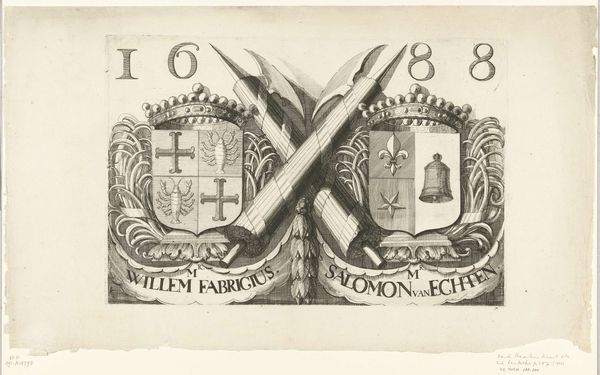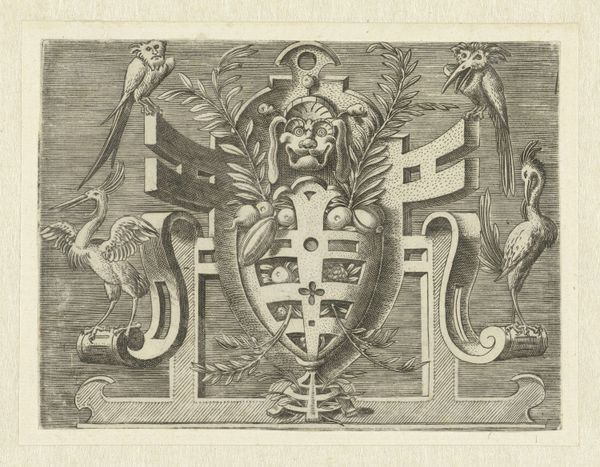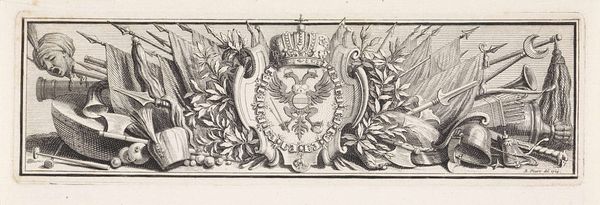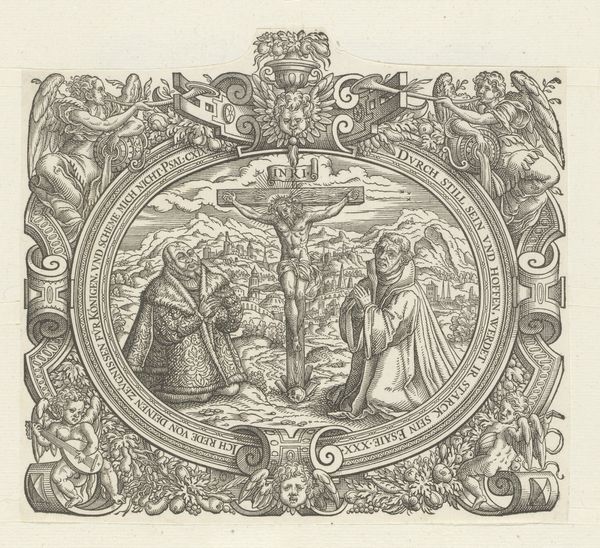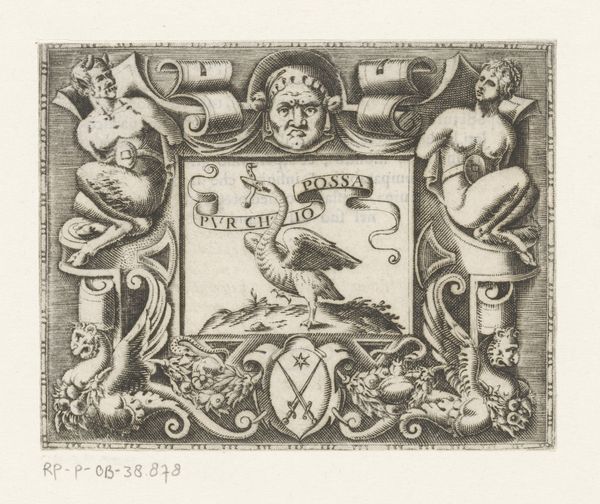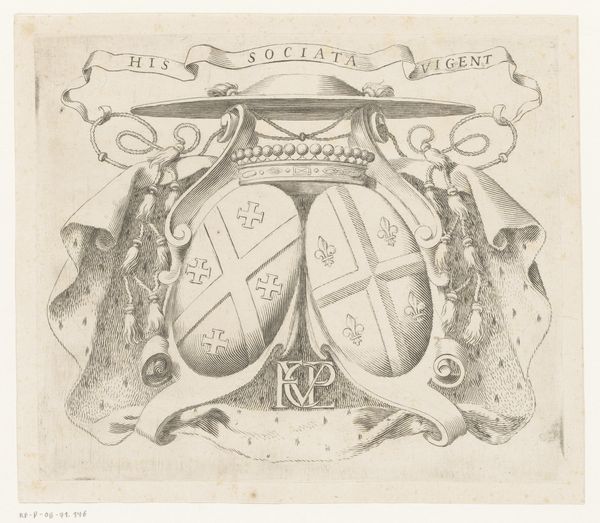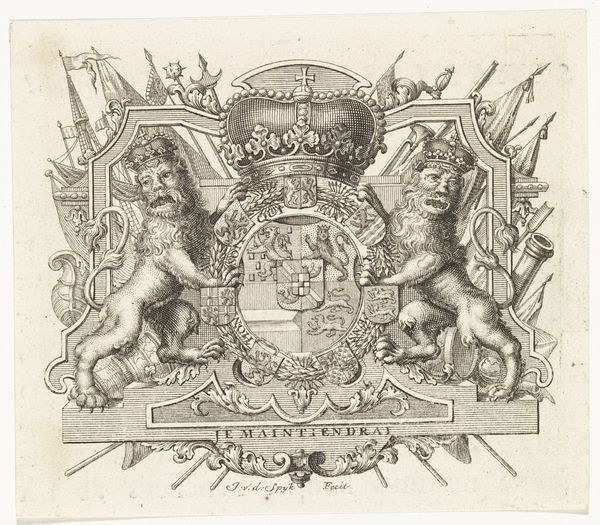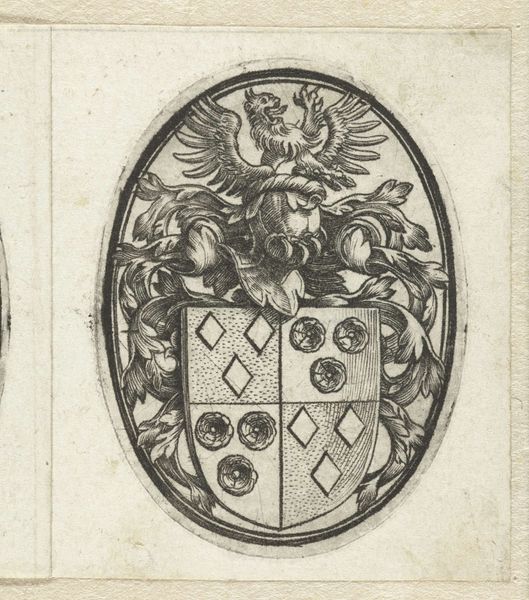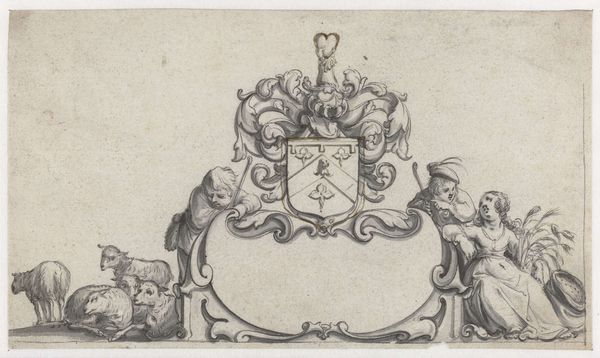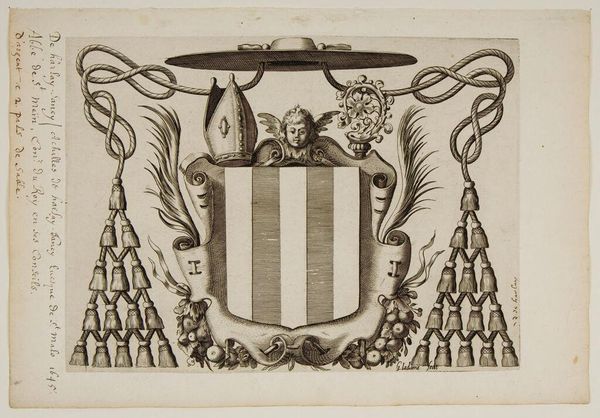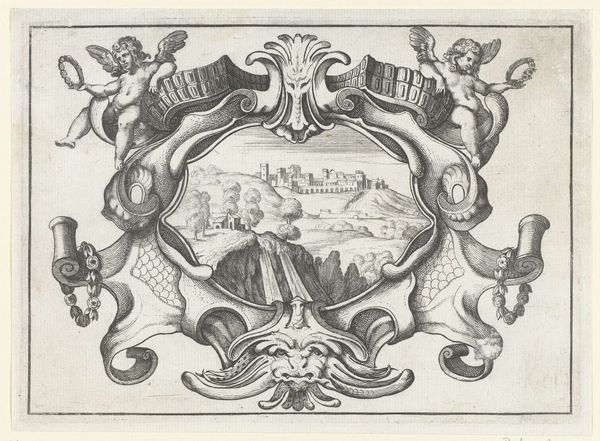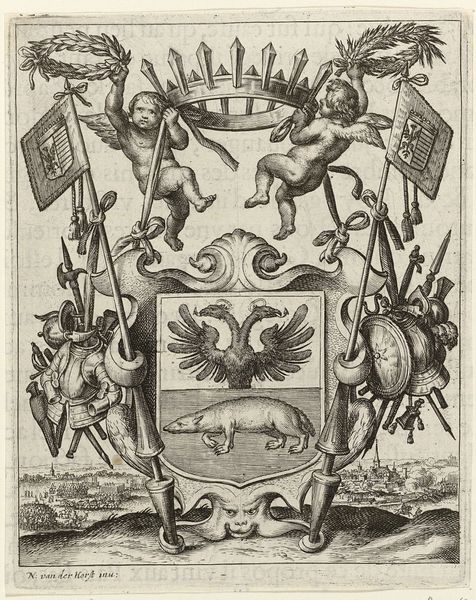
graphic-art, print, engraving
#
graphic-art
#
baroque
#
pen drawing
# print
#
old engraving style
#
engraving
Dimensions: height 262 mm, width 385 mm
Copyright: Rijks Museum: Open Domain
Curator: Looking at this engraving, the contrast is stark, yet the details remain intricate. Editor: The piece we're examining is entitled "Wapens van 'Antoni Coning' en Mahu le Febure" by Romeyn de Hooghe, created between 1688 and 1689. Currently, it resides within the Rijksmuseum's collection. Curator: The heraldic shields, juxtaposed against the crossed halberds, immediately evoke a sense of tradition and power. The composition is rigorously symmetrical. Editor: Considering de Hooghe's technique, we see that it’s an etching which utilizes a dense cross-hatching. The process involves laboriously incising lines into a metal plate. Imagine the hand skills needed to control the depth and consistency of the lines. Curator: Absolutely. Note how those lines form the illusion of volume, light, and shadow, thereby defining each form from the regal crown to the meticulously rendered fur of the animals on each heraldic shield. There’s a hierarchy present, emphasizing order and status. Editor: What’s intriguing to me is how these armorial bearings signify not just identity but potentially commerce or land ownership. How did the materials—the copper, the inks—factor into distributing and asserting that status during the Baroque period? Was this commissioned for a specific event, perhaps marriage or inheritance? The level of labor shows that these coats of arms represented individuals who contributed heavily to their community through craft. Curator: I see it more as the engraving technique being employed to not only signify family honor, but to create something symbolic. Each choice the engraver makes is a symbolic claim of class. The bear on one side suggests strength and courage. While the squirrel is representative of activity and wit. Editor: That’s fair. Considering the physical production—the metalwork, the application of ink, the print runs—contextualizes status with material conditions and demonstrates access to skilled labor, distribution, and trade. Curator: We both are left marveling at the technical capabilities necessary to yield such detail. Editor: The sheer volume of prints would disseminate notions of power far beyond Antoni Coning and Mahu le Febure.
Comments
No comments
Be the first to comment and join the conversation on the ultimate creative platform.
